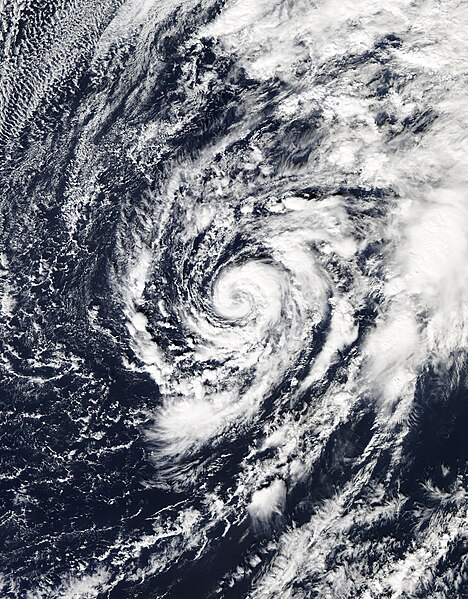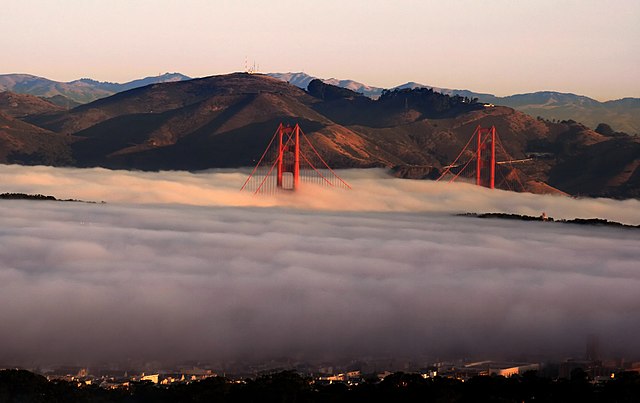In meteorology, a cyclone is a large air mass that rotates around a strong center of low atmospheric pressure, counterclockwise in the Northern Hemisphere and clockwise in the Southern Hemisphere as viewed from above. Cyclones are characterized by inward-spiraling winds that rotate about a zone of low pressure. The largest low-pressure systems are polar vortices and extratropical cyclones of the largest scale. Warm-core cyclones such as tropical cyclones and subtropical cyclones also lie within the synoptic scale. Mesocyclones, tornadoes, and dust devils lie within the smaller mesoscale.
An extratropical cyclone near Iceland
A polar low over the Sea of Japan in December 2009
Subtropical Storm Alex in the north Atlantic Ocean in January 2016
Hurricane Catarina, a rare South Atlantic tropical cyclone viewed from the International Space Station on March 26, 2004
An anticyclone is a weather phenomenon defined as a large-scale circulation of winds around a central region of high atmospheric pressure, clockwise in the Northern Hemisphere and counterclockwise in the Southern Hemisphere as viewed from above. Effects of surface-based anticyclones include clearing skies as well as cooler, drier air. Fog can also form overnight within a region of higher pressure.
An anticyclone just below Southern Australia near Tasmania.
Hadley cell circulation tends to create anticyclonic patterns in the Horse latitudes, depositing drier air and contributing to the world's great deserts.
The subtropical ridge shows up as a large area of black (dryness) on this water vapor satellite image from September 2000.
Golden Gate Bridge in fog








